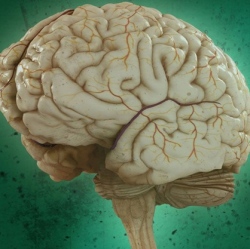
Salk Institute for Biological Studies scientists and collaborators have discovered that physical and mental activities rely on a single metabolic protein called estrogen-related receptor gamma (ERRγ) that controls the flow of blood and nutrients throughout the body.
The new study could point to potential treatments in regenerative and developmental medicine as well as ways to address defects in learning and memory.
“This is all about getting energy where it’s needed to ‘the power plants’ in the body,” says Ronald Evans, director of Salk’s Gene Expression Laboratory and senior author of the new paper, published April 7 in the journal Cell Metabolism.
“The heart and muscles need a surge of energy to carry out exercise and neurons need a surge of energy to form new memories.” Energy for both muscles and brains, the scientists discovered, is controlled by the ERRγ protein.
Evans’ research group has previously studied the role of ERRγ in the heart and skeletal muscles. In 2011, they discovered that promoting ERRγ activity in the muscle of sedentary mice increased blood supply to their muscles and doubled their running capacity. ERRγ, they went on to show, turns on a whole host of muscle genes that convert fat to energy.
Previously, ERRγ was known as a master metabolic switch that regulates a network of genes that in turn drives the body to burn fat. Although studies had also shown that ERRγ was active in the brain, researchers didn’t understand why, the brain burns sugar, not fat, and ERRγ was previously shown to only turn on fat-burning pathways. The researchers decided to look more closely at what the protein was doing in brain cells.
By first looking at isolated neurons, Evans’ group showed that ERRγ activates dozens of metabolic genes in the cells. Neurons that lacked ERRγ didn’t produce as much ATP, a cellular energy molecule, as those that had high levels of the protein. It turned out that the genes controlled by ERRγ in brain cells are those involved in burning sugar, not fat, for energy.
“We assumed that ERRγ did the same thing throughout the body,” says Evans. “But we learned that it’s adaptable to different metabolic roles in different organs.” ERRγ, they now believe, turns on fat-burning pathways in muscles and sugar-burning pathways in the brain.
